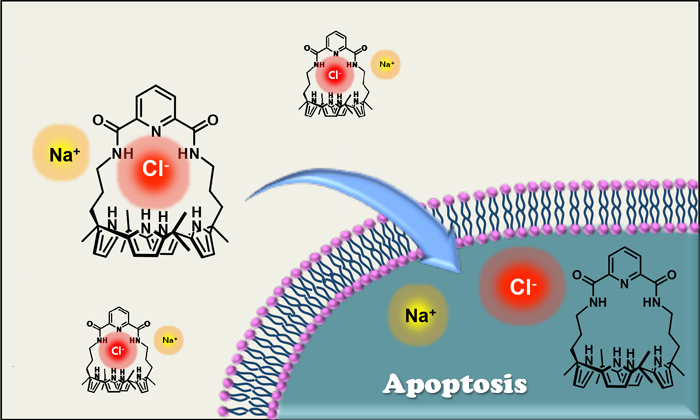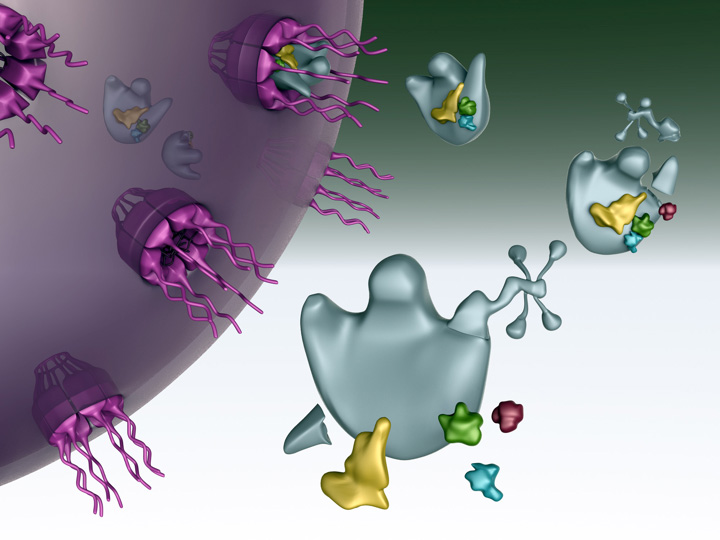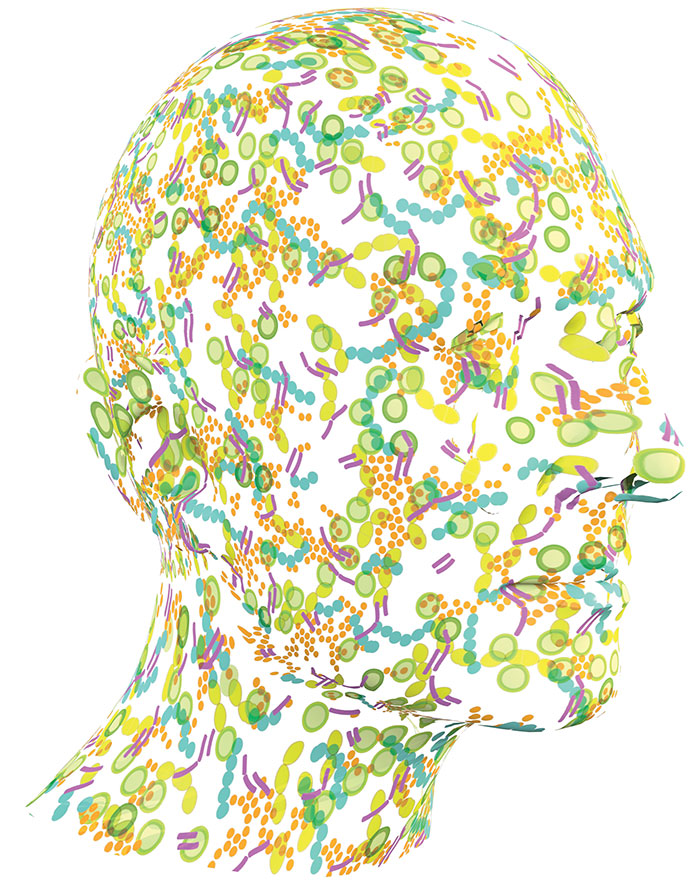News
Synthetic Molecule Makes Cancer Self-Destruct
 Researchers from The University of Texas at Austin and five other institutions have created a molecule that can cause cancer cells to self-destruct by ferrying sodium and chloride ions into the cancer cells.
Researchers from The University of Texas at Austin and five other institutions have created a molecule that can cause cancer cells to self-destruct by ferrying sodium and chloride ions into the cancer cells.
These synthetic ion transporters, described this week in the journal Nature Chemistry, confirm a two-decades-old hypothesis that could point the way to new anticancer drugs while also benefitting patients with cystic fibrosis.
Researchers Discover Possible New Target to Attack Flu Virus
Scientists at The University of Texas at Austin have discovered that a protein produced by the influenza A virus helps it outwit one of our body's natural defense mechanisms. That makes the protein a potentially good target for antiviral drugs directed against the influenza A virus.
Possible Explanation for Human Diseases Caused by Defective Ribosomes
Ribosomes are essential for life, generating all of the proteins required for cells to grow. Mutations in some of the proteins that make ribosomes cause disorders characterized by bone marrow failure and anemia early in life, followed by elevated cancer risk in middle age. These disorders are generally called “ribosomopathies.”

You Are Your Microbiome

Have you ever felt not completely like yourself? You’re not alone. In fact, you’re never really alone. No matter how hard you may try, you’re always in the company of 100 trillion microbial friends.
The Origins of Evolutionary Innovation
Jeffrey Barrick uses TACC supercomputers to understand radical mutations and design artificial organisms.Biologist Looks to New Horizons in Gene Research
Same gene mutation involved in both human deafness and a mustard plant growing sideways.This Is What a Virus Infecting a Cell Looks Like
A video shows the first the first time scientists have observed a virus inserting its tail into a cell to infect it.Virus Caught in the Act of Infecting a Cell
The detailed changes in the structure of a virus as it infects an E. coli bacterium have been observed for the first time.






















